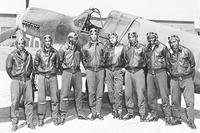The U.S. Army may need to start converting its wheeled fleet, including the Joint Light Tactical Vehicle, to run on electric engines in the next decade, according to the general in charge of future force design.
Vehicle designers at Tesla Inc. in Palo Alto, California, have already shown that electric motor technology can be scaled up to run vehicles the size of the JLTV and larger, Lt. Gen. Eric Wesley, deputy commander of Army Futures Command and director of the Futures and Concepts Center, told defense reporters Tuesday.
"The technology to power a vehicle of that weight exists today," he said. "If it exists now, you can anticipate that we are going to have to transition some of this stuff in the next 10 years."
Related: Here's Why the Army Is Buying Fewer JLTVs Next Year
Wesley is leading an effort to write a proposal, set to be published in early summer, that lays out a path for overcoming the challenges the Army would face if it transitions from internal-combustion engines to electric-powered vehicles.
Such an undertaking, however, would not be easy for an organization as large as the Army, he said.
"The issue is not whether we can build hybrid vehicles -- that's easy," said Wesley, describing how it's simple for people to buy a Tesla vehicle without drastically changing their way of life.
"The Army has to look at this bigger, because we have to look at the entire supply chain, which is why you haven't seen a lot of movement on this in the past," he said. "But as you can see, the entire automotive industry is migrating toward this idea of electrification, and there [are] a lot of good reasons for it."
If the automotive industry "goes to electrification, the supply source for internal combustion engine parts is going to go down and therefore prices are going to go up," Wesley said.
Transporting fuel for vehicles in wartime is also a huge undertaking for the Army.
"The main supply routes that we have to protect in a given theater and the ability to move fuel, it really takes combat power away from the battlefield," Wesley said.
Electric engines would also be simpler to maintain and create less of a burden on the supply chain, he said.
"The number of parts associated with electric vehicles is in the dozens," he said. "If you count the number of moving parts in an internal combustion engine, it's in the thousands. So, if you are talking about a logistic supply line, you have to carry fewer parts."
One of the biggest challenges for the Army would be figuring out a way to dependably recharge electric vehicles anywhere on the battlefield, Wesley said. "We can't just go buy an electric vehicle; we have to look at the supply chain, so how are you going to have sources for charging?"
This is a bigger problem for the Army than for any corporation or private family, he said. "You have to have a means to move the energy and generate the energy at the right time and place."
Currently, the Pentagon is looking at ways to make alternative fuel options organic to its formations, he added.
"Technology tells us that safe, mobile nuclear power plants -- for example, that is something that goes on the back of a truck -- is something that is realistic," Wesley said.
It will likely be a long time, however, before electric motor technology can reliably power heavy combat vehicles such as the Next Generation Combat Vehicle -- a top Army modernization priority that is being developed to replace the Bradley fighting vehicle, he said.
"Right now, we don't see the technology on the near-term horizon being able to power heavy vehicles; it's just too much of a drain on the battery," he explained.
But Wesley said the Army may have to make a decision in the next decade to transition its wheeled vehicles to electric motor technology.
"If that is true, then we have to have a transition plan for the Army to move in that direction. It should include a very detailed strategy and step-by-step pathways," he said. "If we can reduce the fossil-fuel consumption by transitioning our wheeled vehicles on a horizon that we can see ... it wouldn't be prudent not to consider that and have a plan to do so."
-- Matthew Cox can be reached at matthew.cox@military.com.
Read More: New Army Approach on Bradley Replacement: 'Lower the Bar' for Companies to Compete













